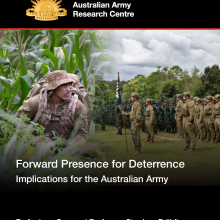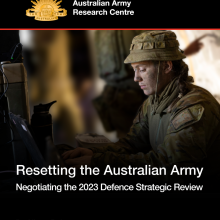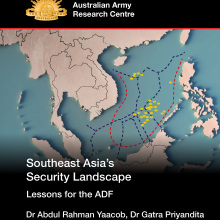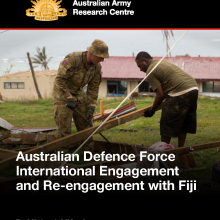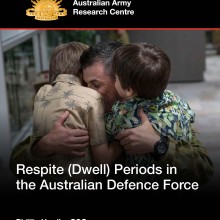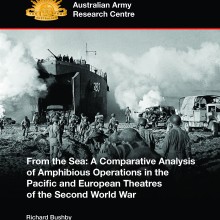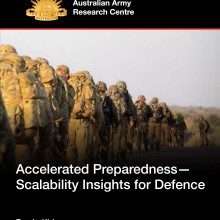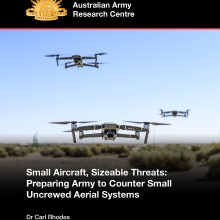Search
Using the filters to the left, click your selection, it will become bold and filter the results, click it again to remove that filter.
Implications for the Australian Army Introduction Armed forces are often required to maintain a forward presence beyond national territory, in support of national interests. The Cold War saw large-scale permanent deployments in defence of allies in Europe and in Asia by the United States, the United Kingdom and other North Atlantic Treaty Organization (NATO) countries. In the last decade, the United States began new permanent or near-permanent rotational presences in Darwin and, with its NATO allies, in …
Negotiating the 2023 Defence Strategic Review Introduction On 24 April 2023 the Australian Prime Minister, Anthony Albanese, and the Minister for Defence, Richard Marles, announced the release of the government’s much anticipated ‘ National Defence: Defence Strategic Review ’ (DSR), the unclassified version. The government had initiated the review the previous August, appointing a former Chief of Defence Force, Sir Angus Houston, and a former Minster for Defence, Stephen Smith, to lead its preparation. …
Lessons for the ADF … Southeast Asia’s Security Landscape …
Executive Summary The Australian Defence Force (ADF) has a long history of defence international engagement in places as diverse as Fiji, Uganda and Vietnam. Most of this is routine, but some occurs on operations where it can be a critical factor in achieving strategic objectives. Fiji is a useful case study to review international and operational engagement practices. Routine international engagement was a key component of the broader bilateral relationship with Fiji prior to the 2006 Coup. This was …
Understanding the Risk of Mass Atrocities in a Changing Global and Regional Context Introduction Global geostrategic trends directly impact Australian foreign and defence policy in a variety of ways. For a nation such as Australia, which prioritises defence of the rules-based international order, there are few violations more egregious to confront than genocide and mass atrocities. Nevertheless, genocide has killed at least 84 million civilians worldwide since 1900. Genocide and mass atrocities are not …
Executive Summary Respite periods in the Australian Defence Force (ADF) have historically been subject to a range of single-service policies. While these have been recently consolidated into a single policy, there remains scope for improvement. As it stands, there is uncertainty around whether the time period designated by the ADF respite policy is enough or too much, the extent to which it should be enforceable, and its applicability to different types of operational deployments. Further, the current …
A Comparative Analysis of Amphibious Operations in the Pacific and European Theatres of the Second World War Amphibious operations came of age between mid-1942 and mid-1945 as the armed forces of the western Allied powers conducted over forty major amphibious assaults. Despite this, these amphibious operations required significantly different force structures, equipment, training and command methodologies. As the Australian Army adapts to deliver an expanded focus on combined arms amphibious manoeuvre, the …
Phase 1—Identifying Barriers Introduction The emergence of increasingly capable robotic and autonomous systems (RAS) has been recognised as having the potential to become a disruptive wave, raising significant challenges as well as opportunities for militaries. Every major military force has now publicly declared an interest in either developing, utilising or banning RAS. Even world leaders, such as Russian President Vladamir Putin, have issued proclamations regarding its potential impact on the future …
Scalability Insights for Defence Executive Summary Prepare to Scale Scalability is about how an organisation’s performance responds to significant changes in workload. The workload may be changing in quantity (more, or less, of the same) or type (existing products and services, or new ones), challenging the current size and shape of an organisation. Sound familiar? Recent events (e.g. the COVID-19 pandemic) have forced many organisations—public, private and for-purpose—to rapidly scale: upwards, …
Preparing Army to Counter Small Uncrewed Aerial Systems Small uncrewed aerial systems (sUAS) are widely available, militarily effective and challenging to defeat. In this Occasional Paper on counter-sUAS, Dr. Carl Rhodes reviews the recent employment of sUAS and evaluates methods to sense and engage these systems. … Small Aircraft, Sizeable …

